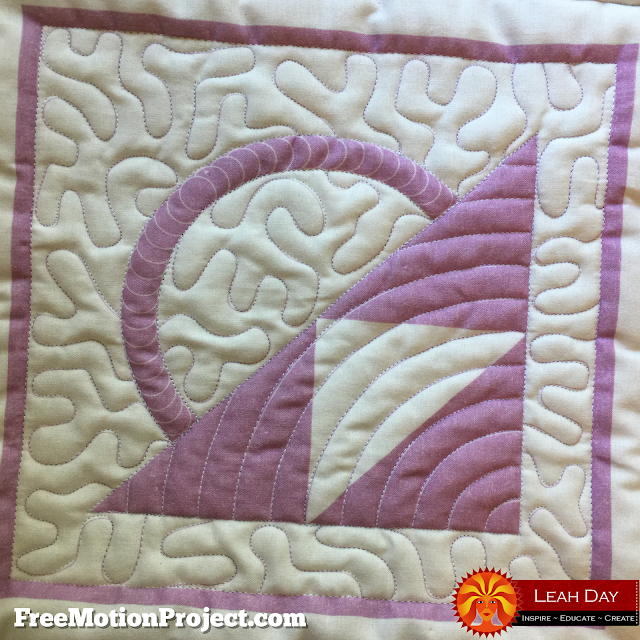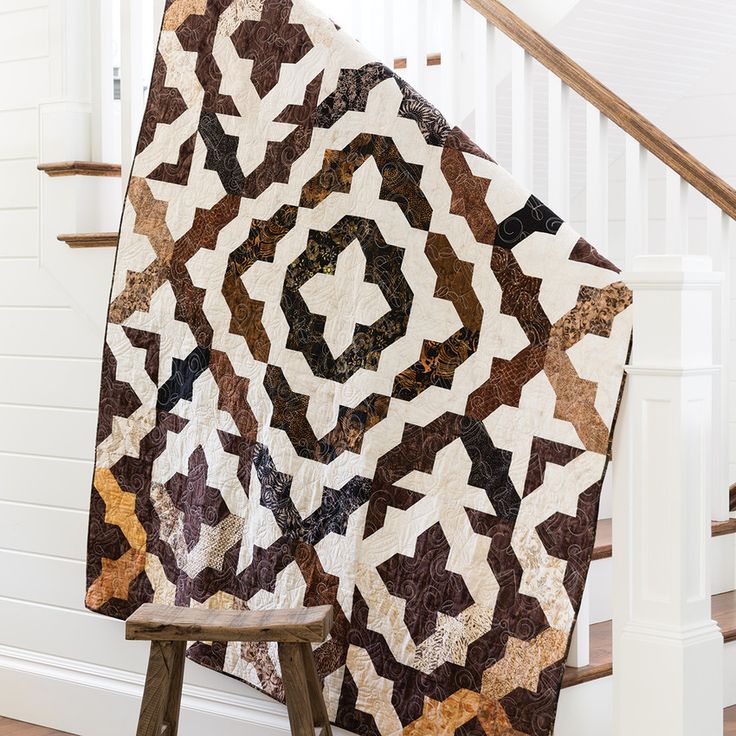
You will need to weave in ends whether you are crocheting or knitting. This helps to keep the project looking professional and prevents any loose ends or unravelling. The best part is that it doesn't have to be hard. Tapestry needles are a great way to get started. The eyelet allows you to pull the yarn's shorter end through. The other end is then woven into the fabric in 2 directions.
There are many ways to weave in ends depending on the knitting project. Do it right. If you do it wrong, you might end up with a project that looks cheap, ugly, or worse, it might not even fit you. If you are making a hand-stitched item, it is a good idea to avoid using sloppy techniques.

A rib stitch is a great way to weave your ends in thicker yarns. This is especially true when knitting in the round. If you are working in rib stitches, make sure to place your needle perpendicularly. This ensures that your needle is in a safe spot.
A duplicate stitch is another way to weave ends. This is a doubled stitch that can be used as a regular stitch. This will save you time when joining new balls of yarn. It is also more effective when working with finer yarns. This trick can be combined with the other method to create a perfect duplicate stitch.
A trick called splicing is a simple way of weaving in your ends. This is especially helpful for fuzzy yarns that are able to be felt. To splice one piece of yarn into another, you need to create a brand new ball of yarn near the edge. Once you've done this, you'll need to weave the ends in for three to four stitches before you can cut the yarn. It's a time-saving and tedious technique that may sound tedious.
It is important to be safe when weaving in ends. An excellent rule of thumb to follow is to leave at the least 6 inches of yarn after you're done with your project. This is to avoid unravelling or even ripping your tail. To reinforce your tail, you can use a piece of thin thread.

Tapestry needles are the best tool for weaving in ends. This will make it easier to weave in your ends. This will work only with long tails. For a smaller project, you might need to use one or more needles to get the same result.
FAQ
What are observation hobbies exactly?
Observation hobbies are activities where you observe people doing what they do. This could be watching sports, reading books or going on holiday. You could also observe other people.
Because they teach you how to think creatively, observation hobbies are great. This knowledge will be useful later in your work for others and yourself.
If you are passionate about something, you will find it easier to learn about it.
If you are interested in learning more about football, for example, you might watch a match or read a book. If you want to learn more about photography, you could take or visit exhibitions.
You could also buy a guitar or play along online to music if you are a musician.
If you like cooking, you could cook your own meals or visit restaurants.
If gardening interests you, you could plant vegetables or flowers.
If you are a fan of dancing, you can join a class or go out with your friends to learn.
If you like painting, you could paint pictures.
Write poetry and stories if that is what you love to do.
If you like drawing, you could draw pictures.
You could work as a caretaker or keeper at a zoo if you are passionate about animals.
If you enjoy science, you might consider studying biology, chemistry and physics.
You can read books, listen to podcasts, or watch films if history interests you.
If you enjoy traveling, you can travel around the world or just explore your own area.
Why do we require hobbies?
Hobbies can be a part of your life because they provide you with time to unwind, recharge, think creatively as well as the chance to exercise, socialize, and relax. You can also learn new skills and develop lifelong interests.
Hobbies can help us find meaning and purpose.
They can be a great way of spending time without having to do anything else.
They're even fun!
If you don’t make time for a hobby then it’s probably not worth your time.
Look at all the options. Perhaps you should get a hobby started today if you don’t already have one.
What are educational hobbies, you ask?
An educational hobby is an activity where you learn something by doing it. It could be anything, from playing sports to learning how an instrument is played.
The key thing is that it should be fun and enjoyable for you. It doesn't have to be done all the time. However, if you get bored of it, you should think about other things you can do instead.
Also, you need to be careful not to spend too much on these activities. They can end up costing more than you think.
What hobbies are best for introverts and what types of hobbies would they enjoy?
Introverts can focus on only one thing at a given time. They tend to prefer solitary activities such as reading, writing, playing music, watching movies, etc.
They also like to be alone. They do not like to socialize all day. In fact, they often find themselves bored when surrounded by people.
Introverts will often choose hobbies that require them alone. You might find them reading books, listening, playing music, taking photos, writing poetry or painting.
Some introverts prefer to live alone. This allows them to concentrate on their hobby and not be distracted.
Statistics
- 37% Video Games 36% Travel 36% Health and Fitness (quizexpo.com)
- I am 100% biologically a woman (discover.hubpages.com)
- The intensity of the dialogue partners' bond at the end of the forty-five-minute vulnerability interaction was rated as closer than the closest relationship in the lives of 30 percent of similar students. (time.com)
- In comparison, men in the “no humor” condition were refused 84.6% of the time and were only accepted 15.4% of the time. (time.com)
- A new survey by Pew Research Center of teens ages 13 to 17 finds that 36% of girls feel tense or nervous about their day every day; 23% of boys say the same. (pewresearch.org)
External Links
How To
How to Start Gardening
Gardening is one form of agriculture that dates back to the beginning. It requires patience, persistence and determination. It is important to choose the right location for your garden. This could be a large plot of land or even just a small area in your backyard. Next, pick the type of plants that you would like. Do you prefer flowers or vegetables? Some people enjoy growing herbs and others prefer raising livestock like rabbits. Before you decide on the type of crops you want to plant, it is important to consider the space available. If you live in a climate that experiences cold winters, then you might decide to grow fruits or berries as they do well in colder climates.
After choosing what you want to plant you need to prepare your soil. Soil is essential in determining whether your plants will thrive or fail. Good quality soil contains organic matter that helps feed your plants' roots. Organic matter includes leaves, twigs (grass clippings), manure, compost, and manure. You need nutrients to your soil after you have prepared it. The type of plant you intend to grow will dictate the amount of nutrients you need. To determine these values, you can use a fertilizer calculator online. There are many fertilizers on the market, so ensure you understand what you are buying.
Now, wait for your seeds to germinate after you have prepared your soil and added the necessary nutrients. The process takes between 2 weeks and 3 months depending upon the climate in your area. After your seeds sprout, it is important to water them frequently. Watering your plants too little or too often can cause problems. Overwatering can cause problems. Overwatering can cause root rot or fungal diseases. When watering your plants, remember that most plants require less water during the warm summer months than in winter. Also, remember that certain plants need to dry out after watered. Tomatoes, for example, need to be kept moist but not too wet. They are not happy to be in soggy soil. After the flowers have stopped, they must go into dormancy. Plants go dormant when they stop producing new growth and instead store energy for next year's harvest. During dormancy, the plant stops sending signals to its roots telling them to produce food. Plants continue to store energy throughout this period. However, if the temperatures drop below freezing and there isn't enough sunlight, the plant will go to sleep.
If you live in an urban environment, you may find yourself limited in the kinds of plants that you can grow. Concrete sidewalks, roads, buildings and parking lots are all common in urban areas. These blocks block sunlight from reaching ground level. Concrete absorbs light, preventing the soil underneath from getting adequate sun exposure. Many plants are unable to survive in urban areas due to the lack of sunlight. There are still plants that thrive in urban environments. Many perennials, trees, and shrubs are able to adapt to urban living. Many annuals can be grown indoors, too, in containers. Container gardens can be used to grow greenery indoors year-round, no matter what the weather outside.
You are now ready to plant your garden!